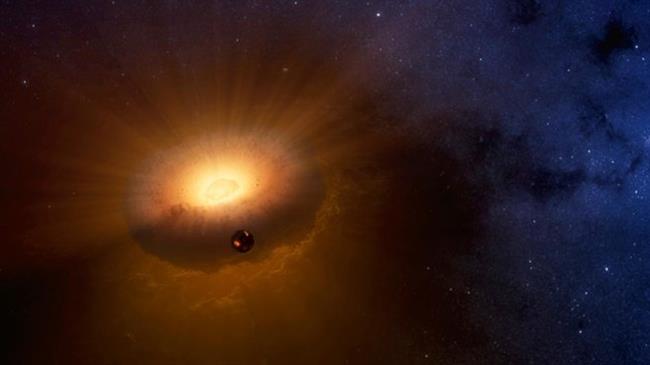A new theory has suggested a different source of origin for the Moon, the Earth’s sole natural satellite, which seems to stack up well against the dominant giant impact model. It says unlike the favored former theory, our rocky moon formed before our cosmic home emerged in its current appearance.
The majority of scientists today have accepted a hypothesis that our Moon was formed after a Mars-sized object, known as Theia, hit Gaia, the early Earth, with a glancing blow around 4.5 billion years ago. The gigantic collision, according to the model, threw up large amounts of rocky material into orbit, which eventually coalesced to form the spherical object we are familiar with. In this model, the current Earth formed before the Moon.
However, a team of international scientists, led by researchers at the University of California, Davis and Harvard University, purposed an entirely new model in a new paper published in the Journal of Geophysical Research: Planets on Wednesday.
The new model challenged the well-received model, suggesting that the Moon arose from a doughnut-shaped ring of debris full of molten rock, called synestia, in the aftermath of the hypothetical proto-planet collision.
Synestia, whose name comes from the prefix “syn-” (together) and the Greek goddess “Hestia,” who represents architecture and structures, has not been spotted in space yet, and hence, still regarded as a hypothetical object.

“We are proposing that the Moon formed inside the vaporized Earth. The synestia is huge, with an equatorial radius of more than ten times that of the present-day Earth. Because the impact-produced by the synestia was so big, the Moon formed inside its vapor surrounded by gas at pressures of tens of atmospheres and temperatures of 3000-4000K (4000-6000 F),” said Simon Lock, one of the study’s co-authors and an astrophysics graduate student at Harvard University.
The researchers suggested synestia could appear here and there in the universe but it is difficult to detect since these objects are relatively short-lived, likely lasting just a few hundred years. They said the Moon emerged within a few dozen years after the big crash, as the synestia shrank and cooled, and the Earth subsequently formed some 1,000 years after the formation of its natural satellite.
“After ten years or so, the synestia shrank inside the orbit of the Moon and the nearly fully-formed Moon emerged from the vapor. The synestia continued to cool and became the Earth within a thousand years”, Lock further said, adding that, astronomically speaking, the process had been remarkably fast.
There are other less appealing models regarding the origins of the Moon. Some scientists suggest that the Earth and the moon formed together while others hold that the moon used to be a free-flying object that was captured by the Earth’s gravity. Thereís even a model suggesting that the Earth stole the moon from Venus.











